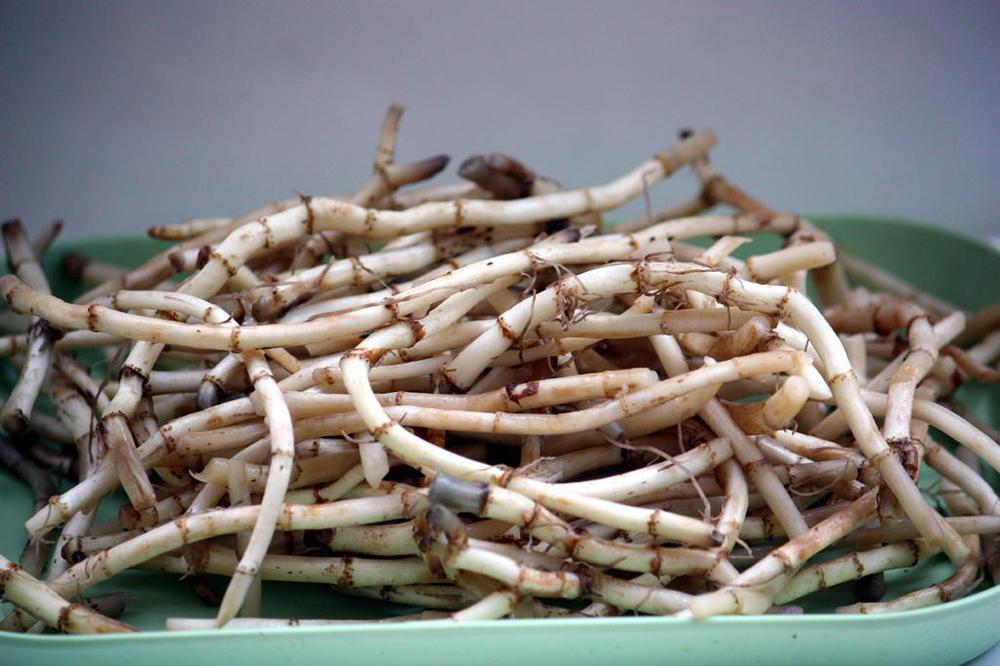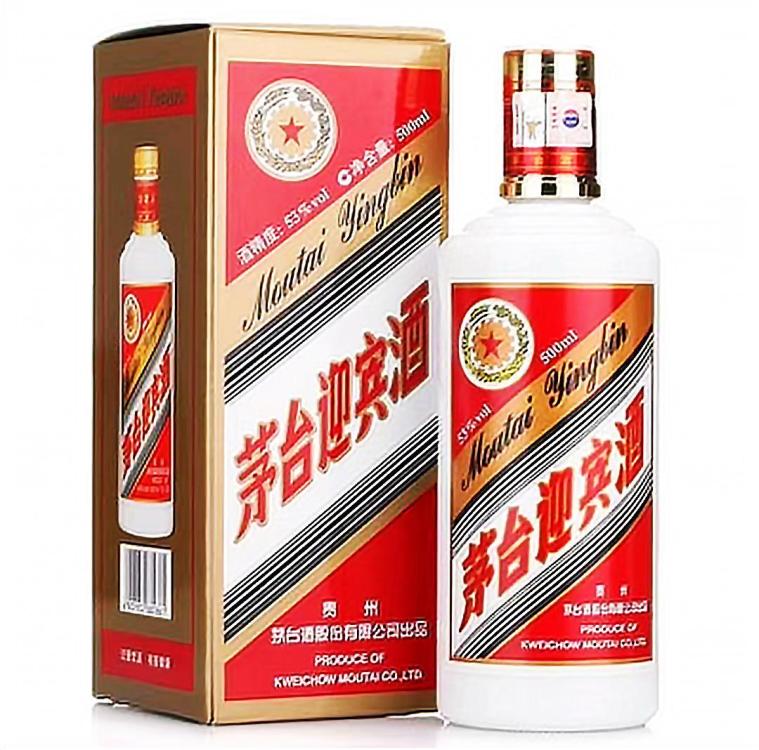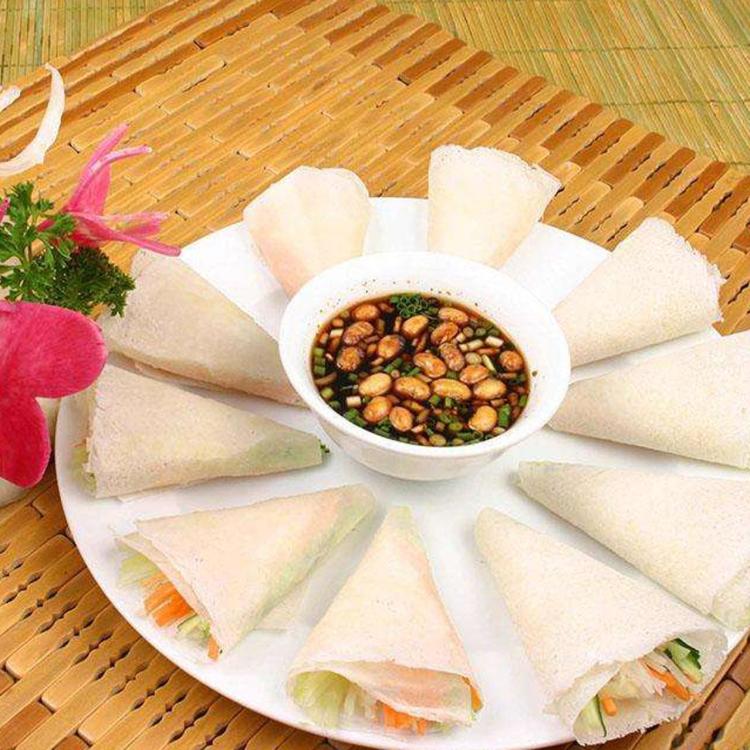贵州菜 (guì zhōu cài) 黔菜 (qián cài)
I spent the years two years of March 1997 to January 1999 living in Western Hunan aka 湘西 (xiāng xī). This was and to an extent still is wild but beautiful mountainous territory and home to several ethnic minorities. Today the area is best know for 张家界 (zhāng jiā jiè), Zhangjiajie, home to China’s first national park and site of the famous mountains seen in the movie Avatar.
To the west is 贵州 (guì zhōu) Guizhou Province. In fact, I was much nearer to Guizhou’s capital, Guiyang than to Hunan’s capital, Changsha. So I spent a lot of time crossing and re-crossing the border.
This file is licensed under the Creative Commons Attribution-Share Alike 3.0 Unported license.
Both areas are hugely influenced by the local ethnic minorities, particularly the Miao, Dong and Tujia. These groups make up 37% of the population. Guizhou also borders the Guangxi to the south, Yunnan to the west, Sichuan to the north-west, Chongqing to the north.
The cuisine reflects it’s location, being influenced by and in turn influencing its neighbours, but also incorporating the ethnic minority cuisine. This means that it is often to tell what is Guizhou cuisine and what is those of its neighbours.
For most Chinese, Guizhou’s major claim to fame is two-fold. First up is a type of 白酒 (bái jiǔ) baijiu, a colourless Chinese liquor, usually made from sorghum and typically measuring between 35% and 60% alcohol by volume (ABV). Despite being relatively unknown in many countries, Baijiu is the most sold liquor in the world, in 2019 outselling whisky, vodka, gin , rum and tequila combined.
There are various types of bai jiu, but by far the best known is 茅台 (máo tái), labelled ‘moutai’ as it is one of only a handful of products allowed to keep its pre-revolutionary romanisation. This was allowed because it was so well-known outside China and they didn’t want to lose the export market. Maotai is only made in the Guizhou city of the same name.
The most famous brand, officially dubbed China’s official beverage, is that of Kweichow Moutai (again the old romanisation), to the extent that many people incorrectly think it’s the only one. In fact, several companies make it. The only stipulation is that it’s made in Maotai city to strict standards and by strictly controlled methods. Kweichow Moutai is the world’s highest valued spirits brand. Their product can be very expensive- even the cheapest is over ¥220 /$31 USD and prices can go up to an incredible $35,000 a bottle. Maotai is served to world leaders at all official banquets. Whether such leaders like it is another story. Personally, I can’t even stand to smell it.
The second most famous Guizhou product is Laoganma, made by the eponymous chilli sauce and chilli crisp company founded by Tao Huabi in the 1980s in her noodle shack in Guiyang. Her product (in various permutations) is now sold around the world.
Contrary to popular belief laoganma doesn’t mean ‘angry lady’. It means ‘old godmother’ (or less often, ‘old adoptive mother’). I have met her though and she comes across as cross and miserable as she looks, despite her immense success and wealth.
Moving on, I feel I must talk about the minority influence on Guizhou. The province has a reputation for sour favours, the sourness being derived not from vinegars as elsewhere in China, but from fermented foods. This reputation stems entirely from the ethnic minorities, in the case of Guizhou, particularly the Miao people. (It is important to remember it also applies to other minorities and to other provinces including here in northern Guangxi and in Hunan.)
Pickled vegetable, known as (醃菜; yān cài) is lacto-fermented using ambient yeasts. The vegetable, often mustard leaf but many others, is salted then pressed under stones for weeks to months, then used in multiple dishes. Meat and fish are also pickled.
凯里 酸汤鱼 (kǎilǐ suān tāng yú), ‘Kaili sour soup fish’ is a hugely popular dish. Kaili is a city in eastern Guizhou which is considered to be the ‘capital’ of the Miao people. The name Kaili comes from their language Hmu and means ‘newly cultivated land’ The city has a large Miao population, but also the Dong and Tujia people.
Sour Soup Fish - image pic2.zhimg.com
The soup contains the pickled vegetable mentioned but also various herbs and spices, including 山胡椒 (shān hú jiāo), literally mountain pepper, but in English, ‘litsea’.
Litsea Seeds
These seeds grow on small trees in Guizhou and Hunan provinces, as well as in Taiwan. They are distinctly lemon scented - like lemongrass - with notes of ginger and a mild pepperiness.. Locally sourced freshwater fish is simmered in this soup and makes a delicious and surprisingly filling meal.
Guizhou has one of the spiciest cuisines, rivalling Hunan and outstripping Sichuan. They grow and use 贵州子弹头 (guì zhōu zǐ dàn tóu) - Bullet Head Chillies which can be hard to source outside southern China. ‘Facing Heaven Chillies’ from Sichuan can be acceptably subbed.
Bullet Head Chillies
These chillies are processed in four ways.
1. 糊辣椒 (hú là jiāo) is heat dried chillies crushed to form a paste
2. 糍粑辣椒 (cí bā là jiāo), is made by mashing the chillies to a paste.
3. 糟辣椒 (zāo là jiāo) made by preserving minced chilli pepper ginger and garlic.
4. 烙锅辣椒 (lào guō là jiāo) is spice-flavoured chilli flakes.
You may be surprised to see 辣子鸡 (là zi jī), Chicken with Chillies on a Guizhou menu. It is, after best, known as a Chongqing / Sichuan dish. However Guizhou does its own, slightly different version, using the 糍粑辣椒 (cí bā là jiāo) above.
Carolyn Phillips, now inactive eG member, has a recipe here. She prefers the Guizhou version, I like both but lean more to the Sichuan.
Guizhou Laziji - Image: materials.cdn.bcebos
Another Guizhou dish is 腊肉炒折耳根 (là ròu chǎo shé ěr gēn). This is cured pork fried with the root of 鱼腥草 (yú xīng cǎo), ‘fish mint’, Houttuynia cordata.

Fish Mint Root
Wikipedia’s car crash of an article on Guizhou cuisine claims this ingredient is unique to Guizhou and not liked elsewhere, which comes as a great surprise to the many people of Hunan, Guangxi, Guangdong, Japan, Vietnam and more. In fact there is strong evidence the dish was actually invented in Sichuan where it is is still made. This short video shows how to make the dish. It is subtitled but the chef is describing it in a strong Sichuan accent! Not a Guizhou accent!
遵义 (zūn yì) Zunyi is a city in the north of the province and is well known in China as being the location of the Zunyi Conference in 1935, where Mao became leader of the Chinese Communist Party during the Long March.
It is also known for 羊肉粉 (zūn yì yáng ròu fěn), Zunyi Mutton Noodles made using rice noodles,
Zunyi Mutton Noodles - Image: pic3.zhimg.com
状元 (zhuàng yuán) meant the top scorer in the highest rank of the Imperial examination system). Today it refers the highest in the Gaokao, China’s infamous college entrance exam. By extension, it also means top grade’.
So, I’m going to translate 状元蹄 (zhuàng yuán tí) as ‘top grade pig’s trotter, another renowned Guizhou dish. The trotters are simmered with 卤水 (lǔ shuǐ),an aged brine soup that includes chicken bones, pork belly and various spices, enhancing the aroma of the trotters. Some lu shui have been used for decades.
Zhuangyuan Trotters - Image: news.2500sz.com
Now that we’ve seen of any lingering vegetarians with that image, I will reveal that Guizhou does cater to them in the form of 丝娃娃 (sī wá wa), vegetarian spring rolls. The name does carry very childish connotations in Chinese!
All uncredited images are mine.


_svg.thumb.png.1e9cf8b65f59c289687c79b70a46dc5f.png)

.thumb.jpg.ff2c933b50efe62817a3cc18d35d6710.thumb.jpg.21e33bfc2bcabafbbd905a19aceca49a.jpg)









